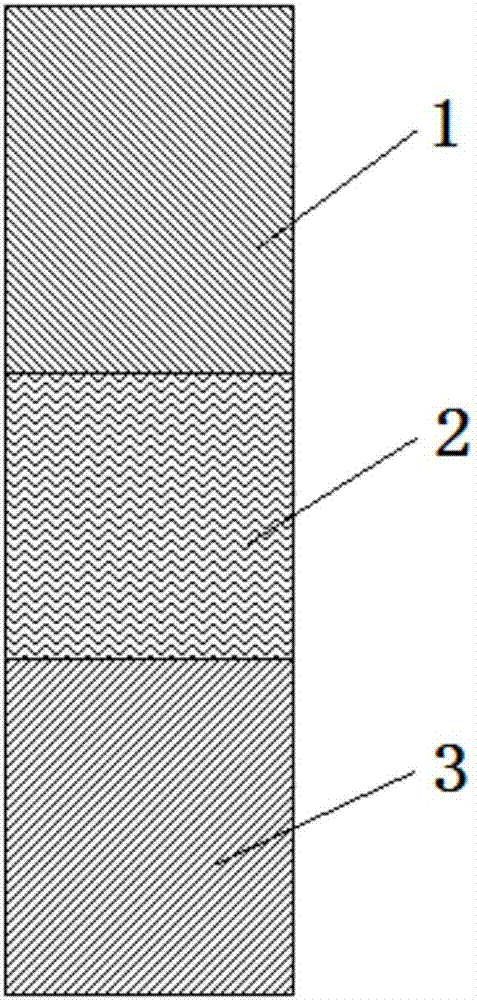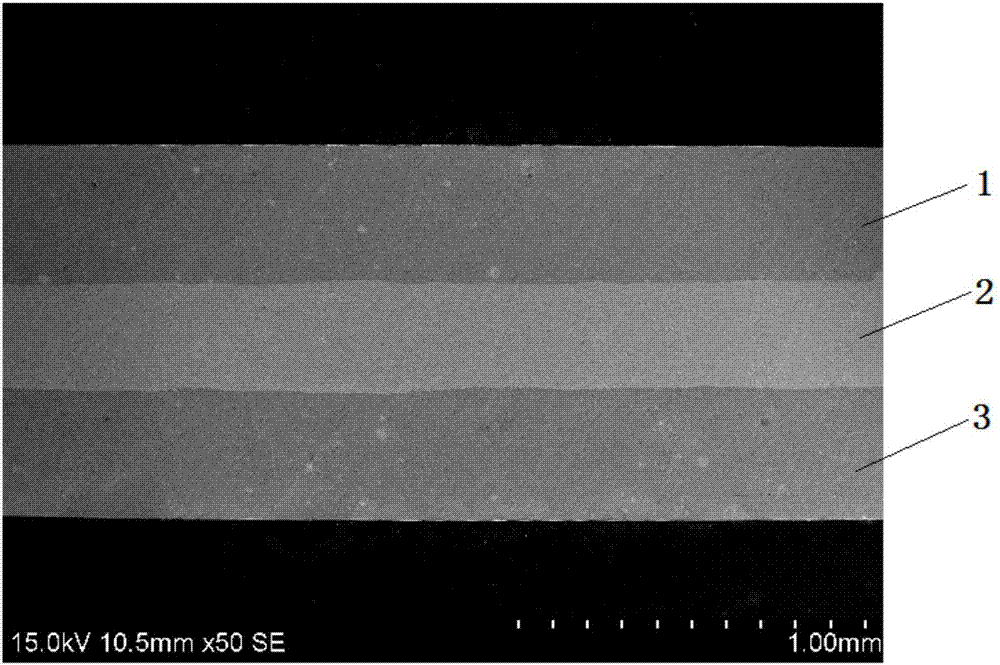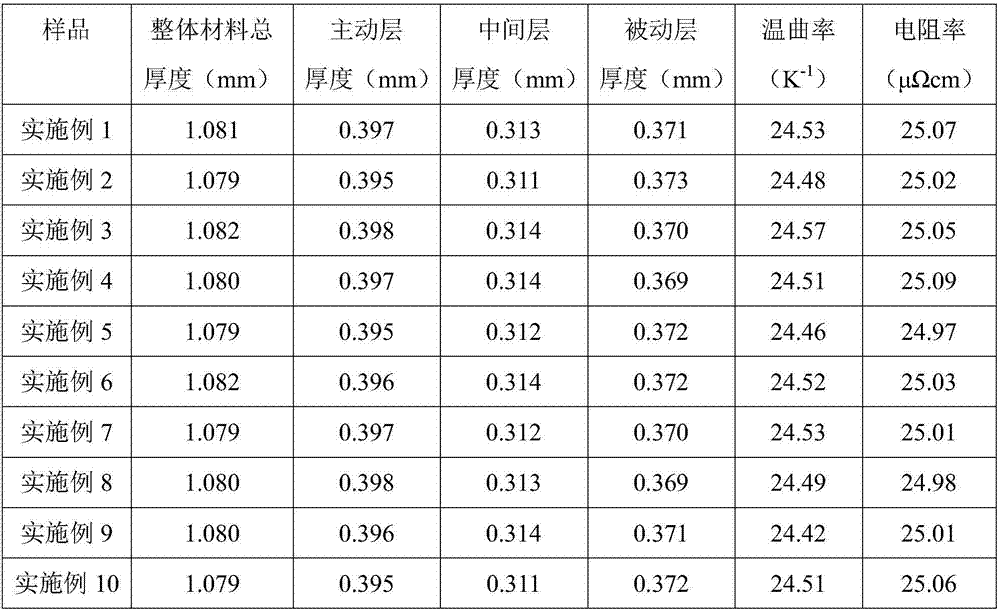Thermal bimetallic material taking electrical pure iron as middle layer and preparation method of thermal bimetallic material
An electrical pure iron and thermal bimetal technology, applied in the field of metal materials, can solve the problems of expensive copper alloy layer and steel alloy layer, high requirements on corrosion resistance, unable to meet the needs of use, etc., and achieves easy large-scale production, Low cost and good corrosion resistance
- Summary
- Abstract
- Description
- Claims
- Application Information
AI Technical Summary
Problems solved by technology
Method used
Image
Examples
Embodiment 1
[0037] 1) Raw material selection: choose FeNi 22 Cr 3 The alloy is the active layer 1 material, DT3 pure iron is selected as the middle layer 2 material, and FeNi is selected 36 The alloy is the material of the passive layer 3, and the selected materials are all strips, the width of which is 100 mm, and the annealed state;
[0038] 2) Cleaning: cleaning the surfaces of the active layer material, the intermediate layer material and the passive layer material to remove oil stains and oxides on the surface;
[0039] 3) Roughening: roughen the surfaces of the active layer 1 material, the intermediate layer 2 material and the passive layer 3 material to improve the bonding strength between the thermal bimetallic material layers;
[0040] 4) Drying: drying the active layer 1 material, the intermediate layer 2 material and the passive layer 3 material at 150°C under a nitrogen atmosphere;
[0041] 5) Pre-rolling: Pre-rolling the active layer 1 material, the middle layer 2 material...
Embodiment 2
[0051] In this example, the initial rolling temperature is 215°C, the reduction ratio is 92%, the temperature of diffusion annealing is 815°C, the reduction ratio of finish rolling is 88%, the temperature of stabilizing annealing is 235°C, and the holding time is 70 minutes ; The total thickness of the overall material in the obtained thermal bimetallic material is 1.079mm, the thickness of the active layer 1 is 0.395mm, the thickness of the middle layer 2 is 0.311mm, and the thickness of the passive layer 3 is 0.373mm. All the other contents are the same as in Example 1.
[0052] The thermal bimetal material prepared in this example also has a layered structure, and the bonding interface between the active layer 1, the middle layer 2 and the passive layer 3 is straight, and the thickness uniformity of the active layer 1, the middle layer 2 and the passive layer 3 is good ;Peel off test according to GB / T 5270-2005, bend the thermal bimetallic material into a right angle, the b...
Embodiment 3
[0055] In this example, the initial rolling temperature is 225°C, the reduction ratio is 93%, the temperature of diffusion annealing is 825°C, the reduction ratio of finish rolling is 89%, the temperature of stabilizing annealing is 245°C, and the holding time is 65 minutes ; The total thickness of the overall material in the obtained thermal bimetallic material is 1.082mm, the thickness of the active layer 1 is 0.398mm, the thickness of the middle layer 2 is 0.314mm, and the thickness of the passive layer 3 is 0.370mm. All the other contents are the same as in Example 1.
[0056] The thermal bimetal material prepared in this example also has a layered structure, and the bonding interface between the active layer 1, the middle layer 2 and the passive layer 3 is straight, and the thickness uniformity of the active layer 1, the middle layer 2 and the passive layer 3 is good ;Peel off test according to GB / T 5270-2005, bend the thermal bimetallic material into a right angle, the b...
PUM
| Property | Measurement | Unit |
|---|---|---|
| thickness | aaaaa | aaaaa |
| thickness | aaaaa | aaaaa |
| thickness | aaaaa | aaaaa |
Abstract
Description
Claims
Application Information
 Login to View More
Login to View More - Generate Ideas
- Intellectual Property
- Life Sciences
- Materials
- Tech Scout
- Unparalleled Data Quality
- Higher Quality Content
- 60% Fewer Hallucinations
Browse by: Latest US Patents, China's latest patents, Technical Efficacy Thesaurus, Application Domain, Technology Topic, Popular Technical Reports.
© 2025 PatSnap. All rights reserved.Legal|Privacy policy|Modern Slavery Act Transparency Statement|Sitemap|About US| Contact US: help@patsnap.com



